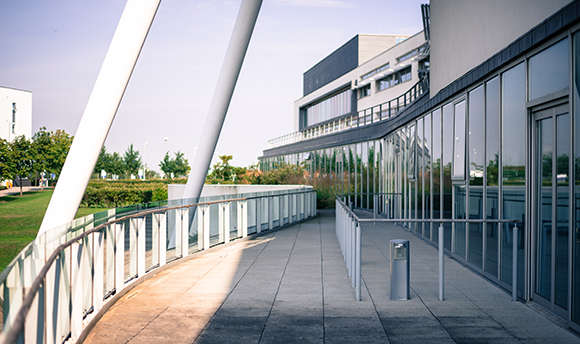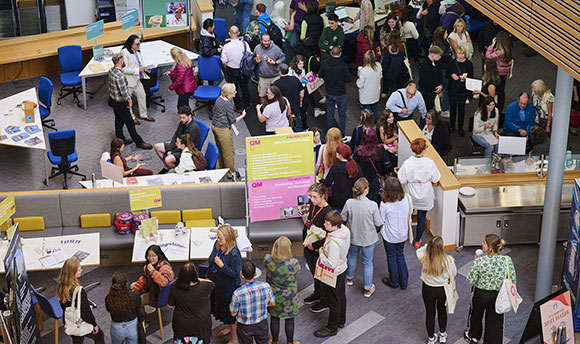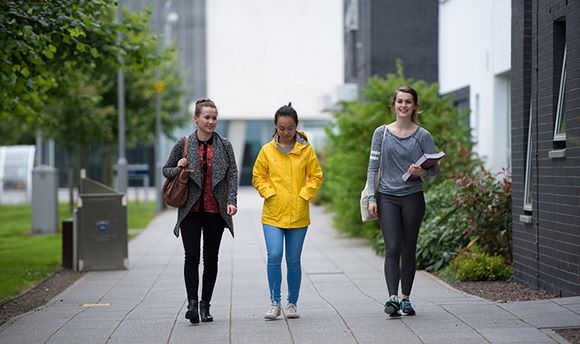BSc (Hons) DIAGNOSTIC RADIOGRAPHY - MANAGEMENT OF CLINICAL EDUCATION HANDBOOK
CLINICAL EDUCATION FOR STUDENTS OF DIAGNOSTIC RADIOGRAPHY
INTRODUCTION
Clinical Education placements have a theoretical as well as a practical focus. They provide clear opportunities for students to develop, evaluate, organise and build upon academic learning in a progressive fashion. They enable integration of theory with practice and the safe, effective assimilation of the student into the multidisciplinary health care team.
Clinical and academic blocks are integrated programme elements and should not be viewed as standing alone. Lecturers, Clinical Tutors, Student Liaison Officers, Practice Assessors, Practice Educators, Supervisors and all members of the multidisciplinary department teams facilitate continuous linking of theory with practice and provide sound student support. Clinical education for students of diagnostic radiography is delivered from imaging departments in the Astley Ainslie Hospital, Edinburgh; Ayr Hospital; Borders General Hospital, Melrose; Crosshouse Hospital, Kilmarnock; East of Scotland Breast Screening Service, Edinburgh; Edinburgh Dental Institute; East Lothian Community Hospital; Edinburgh Royal Infirmary; Forth Valley Royal, Larbert; Lauriston Building, Edinburgh; Leith Community Treatment Centre, Edinburgh; Royal Hospital for Sick Children, Edinburgh; Midlothian Community Hospital, Dalkeith; Queen Margaret Hospital, Dunfermline; St John’s Hospital, Livingston; Victoria Hospital, Kirkcaldy; Western General Hospital, Edinburgh. Information regarding staffing and available modalities may be found in the Clinical Placement Handbook.
These organisations provide guided experiential learning through supervised direct patient contact and allow opportunities to develop personal confidence and professional competence. They facilitate the acquisition of clinical judgment skills and the expertise required to become a competent practitioner and effective member of the multidisciplinary health care team. The quality of your clinical experience is based on an effective partnership between Queen Margaret University, the placement site and yourself. This partnership is regularly monitored to ensure compliance with the Quality Standards for Practice Placements.
The Clinical Education Programme includes elements of clinical supervision, clinical workshops, tutorials and clinical assessment and, with emphases on communication and reflection, enables students to acquire the clinical competencies required to be eligible to apply for registration with the Health and Care Professions Council. Students will also acquire the investigative and analytical skills necessary to enhance the knowledge base of the profession.
Level 1
In Level 1, the student undertakes a formative, introductory two week clinical placement to begin the process of practice education.
Level 2
In Level 2, the student undertakes two modules: “Introduction to Clinical Practice in Diagnostic Imaging” (ICP) and “Clinical Practice in Diagnostic Imaging 2” (CP2). The student must pass the clinical component of ICP before progressing to CP2. ICP, the student undertakes 5 weeks of clinical placement. The learner commences the process of acquiring general radiographic expertise, the safe, effective integration process and starts to develop a profile of professional identity. CP2, the student undertakes 7 weeks of clinical placement. The learner continues to build on the knowledge and skills attained, during Introduction to Clinical Practice, ensuring there is close integration of theory and practice.
Level 3
In Level 3, the student undertakes one module: “Clinical Practice in Diagnostic Imaging 3” (CP3) including 12 weeks of clinical placement. The learner thereby continues the safe, effective and efficient integration into the multidisciplinary health care team whilst continuing to build a general knowledge and skills base. Close integration of theory with practice is facilitated with experience of specialised radiodiagnostic imaging modalities being provided.
Elective placements enable the student to expand their analytical and evaluation skills in a new environment, which broadens the experience and enables recognition of individual approaches to clinical practice (Appendix A and B). International students are not permitted to return to their home country for elective placement.
Level 4
In Level 4 the student undertakes one module “Clinical Practice in Diagnostic Imaging 4” (CP4) including 12 weeks of clinical placement. In the final year, the programme focuses on the consolidation of general radiographic skills. Theory is integrated with practice to provide a sound framework for the competent clinical practitioner. The development of high level skills in problem-solving, critical analysis, evaluation and appraisal will prepare the student for continuing professional development and life-long learning in a multi-professional environment.
CONTACTING THE UNIVERSITY
Details of the clinical programme including practice educator training, QMU staff contact details, QMU Practice Placement Handbook, clinical documentation and communication forms are located on the QMU Practice Educator website: Diagnostic Radiography Practice Made Learning Website
When an incident occurs outside of normal working hours, and there is an urgent requirement to contact the University, please telephone (0131) 474 0000, when prompted, ask for reception.
Radiography Staff Contact Details:
Placement Coordinator:Catherine McClintick: Email Address
Radiation Protection Supervisor: Alison Scott: Email Address
Louisa Armstrong : Email Address
Simon Holmes : Email Address
Martin Vosper : Email Address



